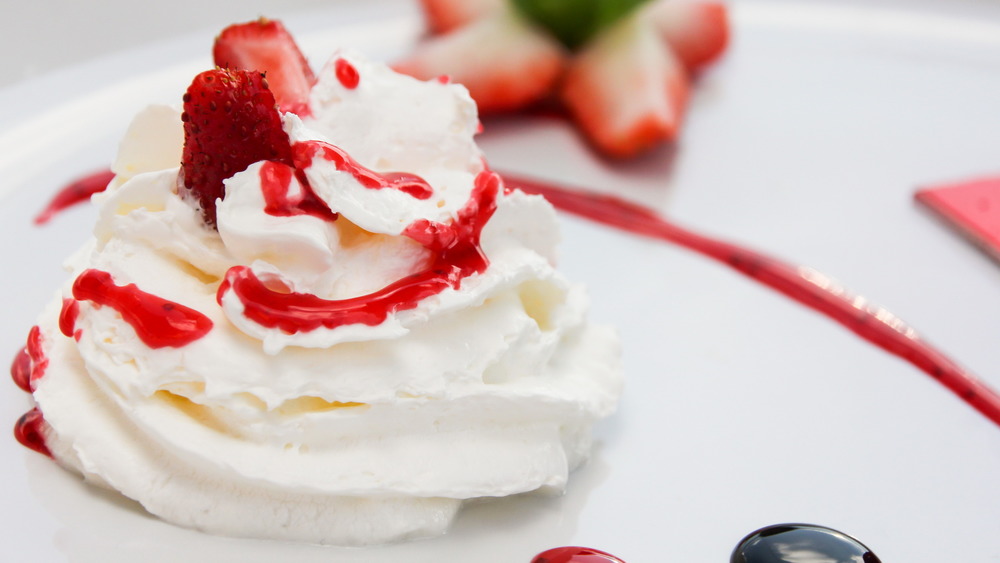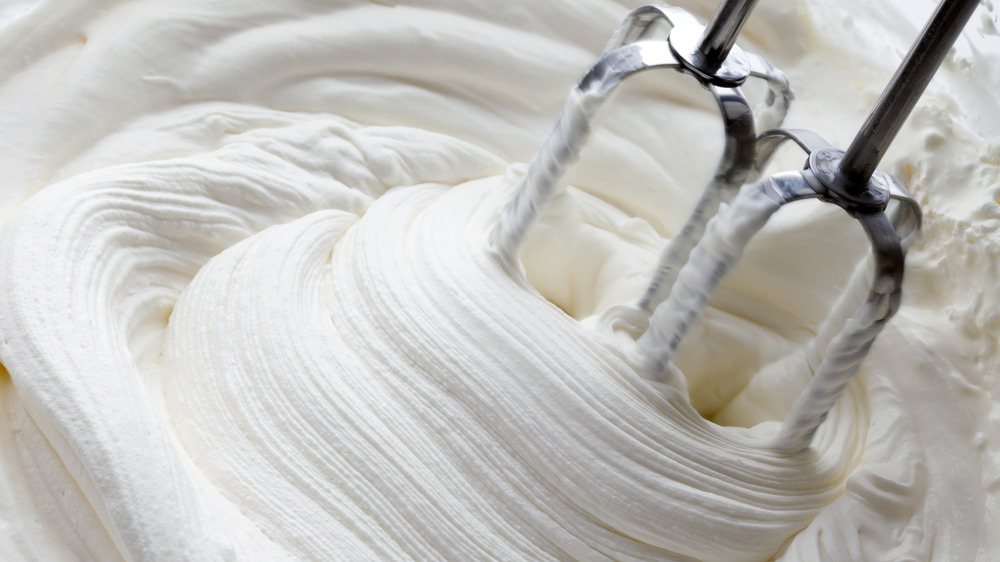This Is The Trick To Fixing Runny Whipped Cream
If cooking is magic, then making whipped cream is definitely one of the cool beginner sleight-of-hand tricks. It's deceptively simple, yet impressive and brings joy to everyone. More often than not, it's also an essential complement to the much more complex stuff that you have planned. Unfortunately, the flip side of the metaphor also applies — if you don't pay attention, whipped cream can be surprisingly easy to mess up.
Whipped cream's texture is an important thing, because if it loses that airy lightness, you're left with either over-whipped, curdled, buttery cream or a runny, unappealing mess. Sure, you can throw the whole thing away and substitute it with Greek yogurt in a pinch, but let's face it — people might not exactly form a queue to order Greek yogurt-topped wedding cakes.
With that in mind, it's good to know a few tricks to fix that faulty batch of whipped cream and bring it to its optimal state. This is the trick to fixing runny whipped cream.
Gelatin can fix runny whipped cream, but pay attention to the temperature
Whipped cream is extremely sensitive to temperature, and as Leaf tells us, this can heavily affect whether it turns out too runny. The secret trick to fix or prevent this is gelatin, which can help stabilize the cream in hotter climates. Just add a tiny amount — maybe half a teaspoon — of flavorless gelatin (or cream of tartar) in the runny cream, and give it another go. Some have even been known to play it safe and pre-add the gelatine.
You can also plan ahead, and make preparations to avoid the potential runniness. Over-sugaring the cream can be a problem, because the sugar is bad for thickening. On the other hand, you can help the process by making sure that the cream — and, if possible, the bowl and even the mixer — is cold. That, of course, also applies to the gelatin, because if you put it in hot, you're only going to make things worse.

